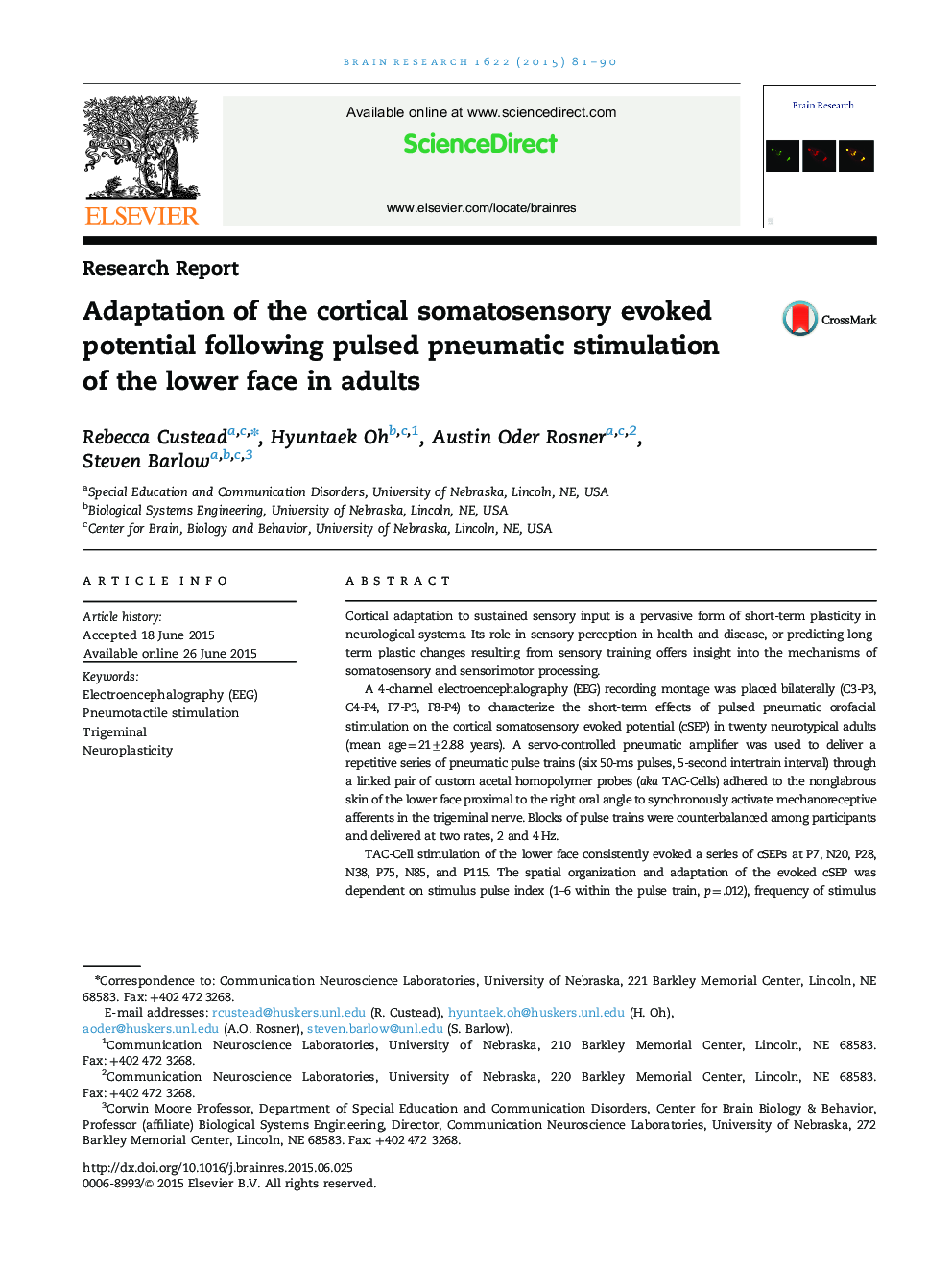| کد مقاله | کد نشریه | سال انتشار | مقاله انگلیسی | نسخه تمام متن |
|---|---|---|---|---|
| 6262937 | 1613817 | 2015 | 10 صفحه PDF | دانلود رایگان |
- We characterize the short-term effects of pulsed pneumatic perioral stimulation.
- Cortical somatosensory evoked potentials (cSEP) were recorded in adults using EEG.
- A servo-controlled amplifier was used to deliver punctate pulses to lower face.
- Results showed rapid cSEP adaptation.
- cSEP adaptation by pulse index, pulse frequency, recording channel, cSEP component.
- cSEP adaptation by pulse index, pulse frequency, recording channel, cSEP component.
Cortical adaptation to sustained sensory input is a pervasive form of short-term plasticity in neurological systems. Its role in sensory perception in health and disease, or predicting long-term plastic changes resulting from sensory training offers insight into the mechanisms of somatosensory and sensorimotor processing.A 4-channel electroencephalography (EEG) recording montage was placed bilaterally (C3-P3, C4-P4, F7-P3, F8-P4) to characterize the short-term effects of pulsed pneumatic orofacial stimulation on the cortical somatosensory evoked potential (cSEP) in twenty neurotypical adults (mean age=21±2.88 years). A servo-controlled pneumatic amplifier was used to deliver a repetitive series of pneumatic pulse trains (six 50-ms pulses, 5-second intertrain interval) through a linked pair of custom acetal homopolymer probes (aka TAC-Cells) adhered to the nonglabrous skin of the lower face proximal to the right oral angle to synchronously activate mechanoreceptive afferents in the trigeminal nerve. Blocks of pulse trains were counterbalanced among participants and delivered at two rates, 2 and 4 Hz.TAC-Cell stimulation of the lower face consistently evoked a series of cSEPs at P7, N20, P28, N38, P75, N85, and P115. The spatial organization and adaptation of the evoked cSEP was dependent on stimulus pulse index (1-6 within the pulse train, p=.012), frequency of stimulus presentation (2 vs 4 Hz, p<.001), component (P7-P115, p<.001), and recording montage (channels 1-4, p<.001). Early component latencies (P7-N20) were highly stable in polarity (sign) and latency, and consistent with putative far-field generators (e.g., trigeminal brainstem, ventroposteromedial thalamus).
Journal: Brain Research - Volume 1622, 5 October 2015, Pages 81-90
